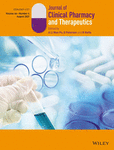Curbing proton pump inhibitor overprescribing: Multifaceted strategies in an academic hospital
Funding information
This research did not receive any specific grant from funding agencies in the public, commercial, or not-for-profit sectors
Abstract
What is known and objective
Proton pump inhibitors (PPI) have become essential in the management of upper gastrointestinal disorders, yet they are prescribed without an indication in up to 89% of cases and the number of prescribed PPIs is on the rise. A working group developed several multifaceted strategies in our multihospital trust to curb inappropriate PPI use. We describe herein these strategies and assess their impact on PPI consumption in a hospital belonging to this trust.
Methods
From 2012 to 2019, our actions included the publication and presentation of a review of emergent PPI side effects, the development of an appropriate use leaflet, medication audits, journal club meetings, and prescription analysis. We considered that a decrease in PPI consumption could be a relevant surrogate criterion for the appropriation and acceptance of these interventions; this was assessed from 2012 to 2019 and expressed as defined daily dose (DDD)/1000 patient-days.
Results and discussion
There was a clear downward trend in the consumption of PPIs, both in medical and surgical wards. The overall PPI use decreased by 17.1% (from 566 to 468 DDD/1000 patient-days). IV PPI consumption dropped by 37.7% (from 146 to 91 DDD/1000 patient-days), while oral PPIs consumption decreased by 10% (from 420 to 378 DDD/1000 patient-days).
What is new and conclusion
Sustained strategies aimed at curbing PPI overprescribing led to a sustained decrease in PPI consumption in our hospital. This decrease encourages us to pursue this strategy and to diversify our actions.
CONFLICTS OF INTEREST
No conflicts of interest have been declared.




